SUSHRUTA
SUSHRUTA
FATHER OF SURGERY
It is a pleasant morning in Pune in the year 1793 and Cowasjee, a bullock cart driver, lies on a wooden bench in deep slumber. His face is partially covered by a muslin cloth. Around him several men and women are busy, assembling surgical instruments, preparing medicinal pastes and rolling cotton bandages. In attendance are two British surgeons who are about to witness the reconstruction of nose by a novel technique described by Sushruta, and practiced in India, but unknown to the Western world.
The surgeon enters – he belongs to the Kumbhar(potter) clan but is experienced in this surgery. Cowasjee has had his nose and arm amputated by Tipu Sultan’s army during the Third Anglo Mysore war as punishment for working for the British. Four others have received the same fate, however, after a year of imprisonment they have managed to escape and seek treatment.
The muslin cloth is removed revealing the ghastly hole where the nose used to be. The surgeon takes a thin plate of wax and fits it onto the stump of the nose, molding it to shape. Then he flattens the wax and places it over Cowasjee’s forehead. Cowasjee has been given some alcoholic potions and bhang and is totally oblivious. Swiftly, using the wax as template, the surgeon outlines and removes a piece of skin from the forehead, keeping an attachment between the eyes to preserve the blood supply and twists the flap over the nasal stump, the edges of which are freshened. The flap is attached with sutures made of cotton; warm compresses are placed to staunch excess blood. Two hollow reeds are placed in each nostril and the whole area is covered with cotton and pure sesame seed paste.
This successful technique of rhinoplasty had been described by Sushruta who used a cheek flap. The observing British surgeons, thoroughly impressed, quickly reported this in the Madras Gazette and then published the procedure in the “Gentleman’s Magazine” in London in 1794 under the title “A Singular Operation”. This became widely known as the “Indian Method” in plastic
surgery. It differed from what was practiced in the West where a flap was made from arm skin, so the arm had to be attached to the face until healing occurred. This operation was commonly and successfully performed in India where removal of nose was a gruesome form of punishment, whereas in Europe loss of nose was usually secondary to disease such as leprosy or tertiary syphilis.
The practice of surgery in India dates back to ancient times. Sushruta, who lived and practiced in modern day Varanasi is considered the Father of Surgery and wrote a comprehensive text in Sanskrit slokas, imparting knowledge of all aspects of surgery, called the Sushruta Samhita.
Sushruta lived around 600 BC – a period considered the golden age of Indian medicine He was a disciple of King Dievodasa who belonged to the Dhanvantari gurukul, Dhanvantari being the deity of medicine. There existed a thriving guru shishya parampara where knowledge was transferred verbally and Sushruta was a keen student. However, he revolutionized surgery as it was known then by advocating dissection of cadavers, which was against the tenets of Hindu ritual where a dead body was not to be touched by knife. To circumvent, Sushruta immersed the corpses for seven days under flowing water so the decomposed skin could be brushed off instead of cut and deeper layers could be studied.
He described various surgical techniques including excisions (Chedana), incisions, (Bhedana), scraping (Lekhana), puncturing (Vedhana), probing (Eshana), extraction (Aharana), drainage (Visravana) and suturing (Sivya), along with use of cauterization, by chemicals and heat, application of leeches and anesthesia drugs.
He designed instruments -101 blunt yantras and 20 sharp shastras and identified 700 medicinal herbs. He advocated that students spend six years studying and learn surgical techniques by practicing on vegetables and soft wood before touching a live patient. He described what an ideal surgeon should be – even tempered, fearless, knowledgeable, of steady hand, compassionate, clean with short hair and nails.
Aside from rhinoplasty he described in detail ear lobe repair, removal of cataracts by a process called couching where a sharp instrument is introduced into the eye to dislodge the opacified lens into the vitreous chamber and allow light. He
explained setting of bones and fractures by traction and manipulation and use of splints, removal of bladder stones by making an incision in the perineum, removal of a dead fetus from womb. He advised on after care and prevention of infection by cleanliness and medicinal herbs.
He was the first to connect malaria to mosquitoes, plague rats and identified diabetes by the honey taste of urine.
Sushruta Samhita along with Charaka Samhita forms the foundational text of Ayurveda. His genius remained unknown until translation into Arabic in the 8th century as “Kitab e Susrud “. Further recognition came in the early 19th century when Hessler translated into Latin and Max Muller into German. The English translation was edited and published by Kaviraj Kunja Lal Bhishagratne in Calcutta in 1907. The oldest surviving manuscript, written on palm leaves is displayed in the Kaiser Library in Nepal datable to 875 ce.
Udita Mukhuty Jahagirdar

